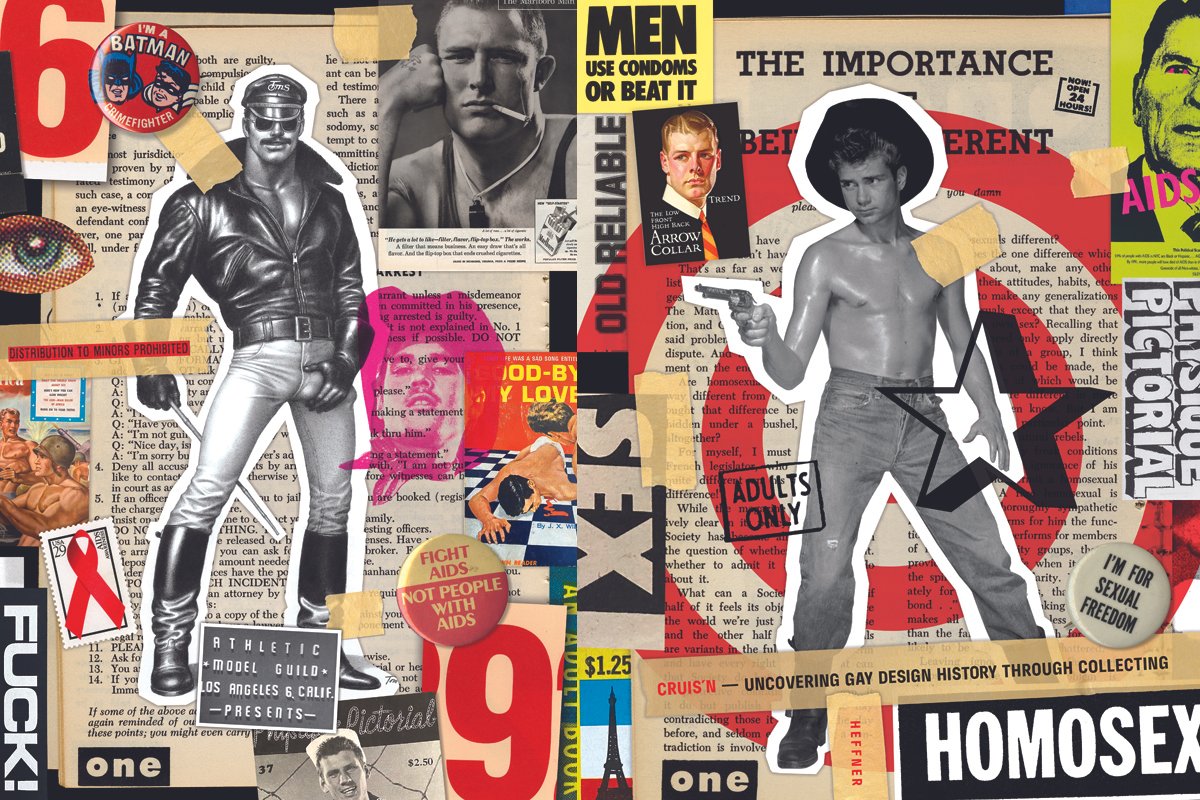Research.
I am obsessed with collecting vintage gay ephemera.
What started as an eye-ogling attraction for hunky beef-cake models, my collecting intensified and deepened because of my ever-growing curiosity for gay history. I wanted to know more than what I was taught through the lens of white heterosexual America. I wanted to uncover as much as possible about the stories and heroes who were kept from me in my youth.
The result of my obsession is a collection of visual storytelling. One that uncovers how postwar gay men found their identity and fostered community. How gay artists and photographers used books, magazines, pamphlets, and posters as means to not only showcase their artistic talents, but also to introduce the gay lifestyle to the public at large. How gay men developed secret codes for sex and survival. How heroes like Frank Kameny, Marsha P. Johnson, Silvia Rivera, Harvey Milk, and the members of ACT UP refused to be silent in the face of prejudice and oppression.
This thesis captures my journey of discovery into the histories behind each of these people and moments, and the ways graphic design and print media acted as tools for homosexual men to discover and nurture their identities in an analog world. Decades before the internet and hookup apps put our history and our bodies at each other’s fingertips, it was print culture—easy to disseminate and difficult to track—that helped gay men find their sexual compatriots.
Working on this thesis for the last two years meant moving beyond my comfort zone as a graphic designer. Some days I was a researcher—other days, a collector, curator, or archivist. My aspiration for this collection is to become an accessible archive that preserves this history, rather than being tossed into the fire. After all, the equality sought by the generations of artists and activists profiled in these pages is an equality we’re still fighting for today.
View my thesis here.
View the archive here.
____
Research Statement:
CRUIS’N: Uncovering Gay Design History Through Collecting
Introduction:
The field of design history has long focused on the evolution of aesthetics and functionality. However, one important facet that has received limited attention is the influence of LGBTQ+ individuals and the vibrant history of queer design. The intersection of sexuality and design is a rich, multifaceted area that deserves exploration. This research endeavors to uncover the unique contributions, challenges, and cultural implications of gay design history. By examining the narratives of gay designers, illustrators, and photographers and the queer sensibilities inherent in design objects, I aim to broaden the understanding of design history.
Research Objectives:
Historical Exploration: To trace the presence and impact of gay designers, photographers, and illustrators during the mid-century history of design, during the height of censorship.
Cultural Significance: To analyze how queer design elements have influenced broader design trends and aesthetics, shaping perceptions of sexuality, identity, and social norms.
Representation and Marginalization: To assess the extent to which gay designers have faced discrimination, exclusion, or erasure within the design industry and their resilience in overcoming these challenges.
Methodology:
My research involves an interdisciplinary approach, combining archival research, and visual analysis. I examine vintage gay emphemera—pulp fiction literature, advertising, photographers, and illustrators to reveal the subtle and overt queer influences.
Significance and Innovation:
This research is innovative in several ways:
It fills a critical gap in the understanding of design history by acknowledging the often overlooked but substantial contributions of gay designers.
It highlights the broader impact of queer design elements on culture and societal perceptions of gender, sexuality, and identity.
It offers a platform for gay designers to share their stories and perspectives, contributing to the visibility and recognition of their work.
The living archive provides an accessible archive of my ephemera collection.
Expected Results:
This research will result in a comprehensive history of gay design, shedding light on the work of gay designers and their influence on the broader design landscape, gaining a deeper appreciation of the intersection of design and identity and a more inclusive understanding of design history.
Conclusion:
By exploring the dynamic and diverse history of gay design, my research aims to celebrate the contributions of gay designers, acknowledge the challenges they have faced, and ultimately broaden the perspective of design history. It underscores the importance of recognizing the diversity of voices that have shaped the design world and the influence of design on societal perceptions of sexuality and identity.
Future Directions:
This research will open doors for further exploration into queer design history, potentially leading to exhibitions, publications, and educational initiatives that promote inclusivity and recognition of LGBTQ+ designers within the design community.
I will continue to add to the collection and archive, and keep it accessible to all.
